SOURCE: IDRW.ORG TEAM
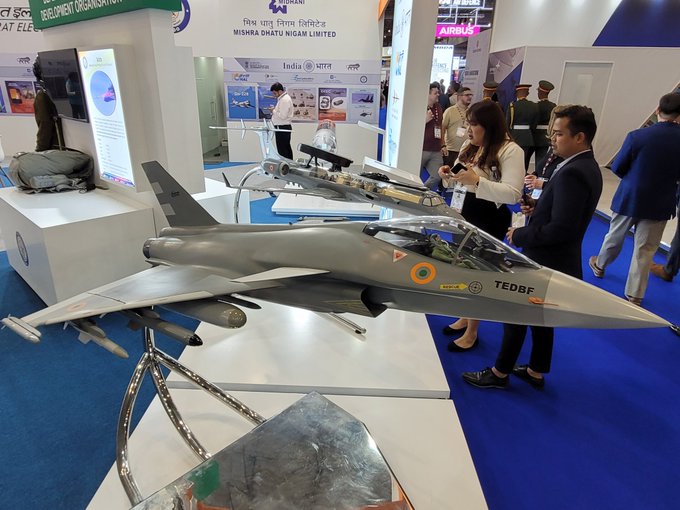
The Defence Research and Development Organization (DRDO) made a significant impact at the Dubai Air Show by unveiling the scale model of the Indian Navy’s forthcoming Twin Engine Deck Based Fighter (TEDBF). This marked the first public appearance of the scale model, drawing attention for its unique design.
The TEDBF, weighing 26 tons, is slated to replace the Russian-supplied Mig-29K for fighter operations from Indian aircraft carriers starting in 2035. The aircraft’s design sparked discussions among visitors, with some noting its resemblance to the French Rafale, while others pointed out similarities to the Euro Canard configuration found on the Eurofighter Typhoon.
Continue readingSOURCE: RAUNAK KUNDE / NEWS BEAT / IDRW.ORG
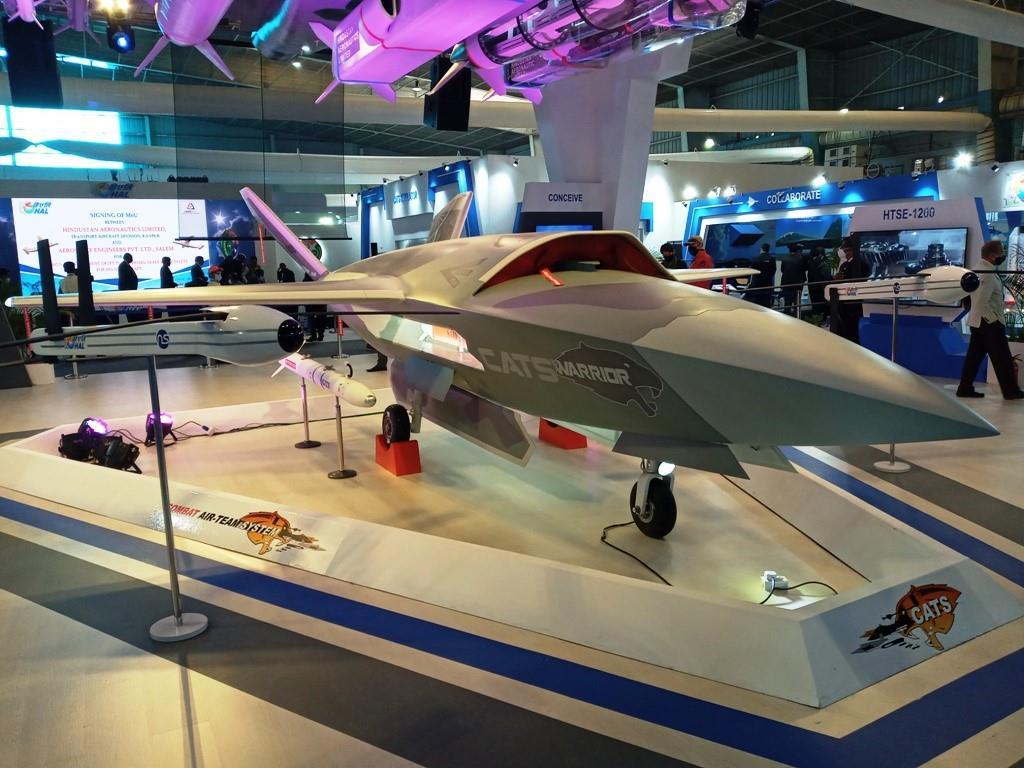
In a significant development, the Indian Air Force (IAF) is making strides in the realm of Manned-Unmanned Teaming (MUM-T), with Air Marshal Radhakrishnan Radhish highlighting the progress during the Dubai International Air Chiefs’ Conference. The IAF’s exploration of this cutting-edge concept is set to reshape the landscape of combat aviation, ushering in an era where autonomous assets collaborate seamlessly with manned platforms.
Air Marshal Radhish emphasized that the integration of MUM-T is an ongoing initiative, projecting a timeline of “10-20 years” before Combat Air Vehicles (CCAs) operate autonomously alongside manned assets. The MUM-T concept envisions a collaborative ecosystem where piloted aircraft and unmanned vehicles work in tandem, leveraging the strengths of both to enhance mission effectiveness and operational capabilities.
Continue readingSOURCE: RAUNAK KUNDE / NEWS BEAT / IDRW.ORG
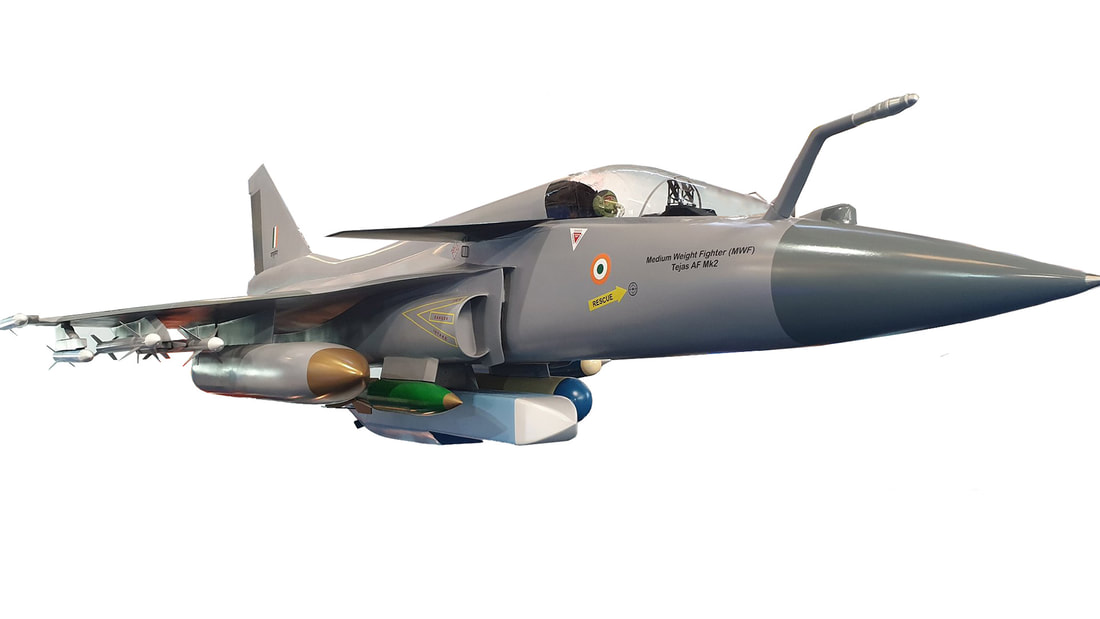
The global market for fighter jets is undergoing a significant transformation, marked by an unofficial boycott of Russian and Chinese offerings. Many nations, aligning themselves with the West, are reevaluating their procurement plans and turning away from fighter jets originating in Russian and Chinese arsenals. The primary driver behind this shift is the ongoing geopolitical realignment, with Russia and China forming one camp and the rest aligning with Western-backed campaigns.
While the demand for fighter jets is on the rise, not every nation can afford the high costs associated with American 5th-generation offerings like the F-35. In response, several countries are exploring more cost-effective options, turning their attention to Asian countries such as South Korea for the procurement of affordable and low-cost fighter jets like the FA-50, based on the T-50 Trainer aircraft.
Continue readingSOURCE: RAUNAK KUNDE / NEWS BEAT / IDRW.ORG

The Indian Air Force (IAF), through the Air Officer Commanding of the 12 Base Repair Depot, Air Force, representing the Head Quarter Maintenance Command, has issued an Expression of Interest (EoI) to Indian firms capable of designing, developing, testing, and delivering ‘Expendable Low-Cost Target Drones.’ This initiative aims to enhance training for personnel engaged in Counter Unmanned Aerial Vehicle (CUAV) Systems.
The project emphasizes the importance of indigenous components, software, and technology to align with the ‘Aatmanirbhar Bharat’ goal, fostering self-reliance and innovation in the defence sector.
Continue readingSOURCE: IDRW.ORG TEAM
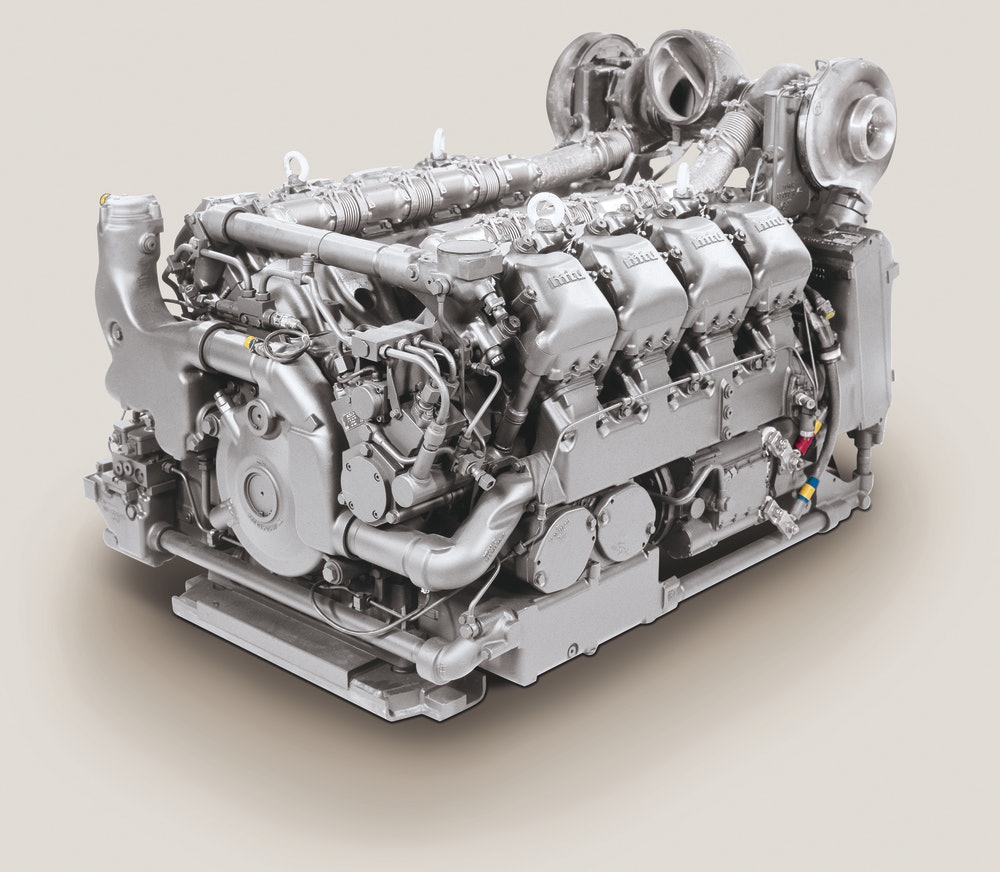
The collaboration between Germany’s Motoren- und Turbinen-Union (MTU) and India for supplying engines to power the Light Tank prototypes has encountered a significant hurdle. MTU, under the deal, was expected to provide engines for the development of India’s Light Tank, a crucial project led by DRDO-L&T. However, due to unforeseen reasons, MTU was unable to fulfill the supply, prompting DRDO-L&T to turn to American Cummins for its powerpack engine to propel the four prototypes of the Light Tank.
The snag in the collaboration with MTU arises from the German company’s failure to secure export clearance from the German government. This development exposes a certain level of hypocrisy within the German administration, considering earlier statements by German Defence Minister Boris Pistorius expressing willingness to support reliable partners like India.
Continue readingSOURCE: IDRW.ORG TEAM

In a significant development, India and the United States are set to review the progress of their collaborative efforts regarding the co-development of F414 engines for the Light Combat Aircraft (LCA) Tejas-Mk 2. This initiative is crucial for enhancing India’s defense capabilities and modernizing its air force.
The collaborative venture was officially set in motion during Prime Minister Narendra Modi’s visit to the United States in June, where a memorandum of understanding (MoU) was signed between General Electric (GE) and Hindustan Aeronautics Limited (HAL). The objective of this partnership is to co-develop F414 engines, which will be integrated into the Tejas-Mk 2 aircraft.
Continue readingSOURCE: RAUNAK KUNDE / NEWS BEAT / IDRW.ORG
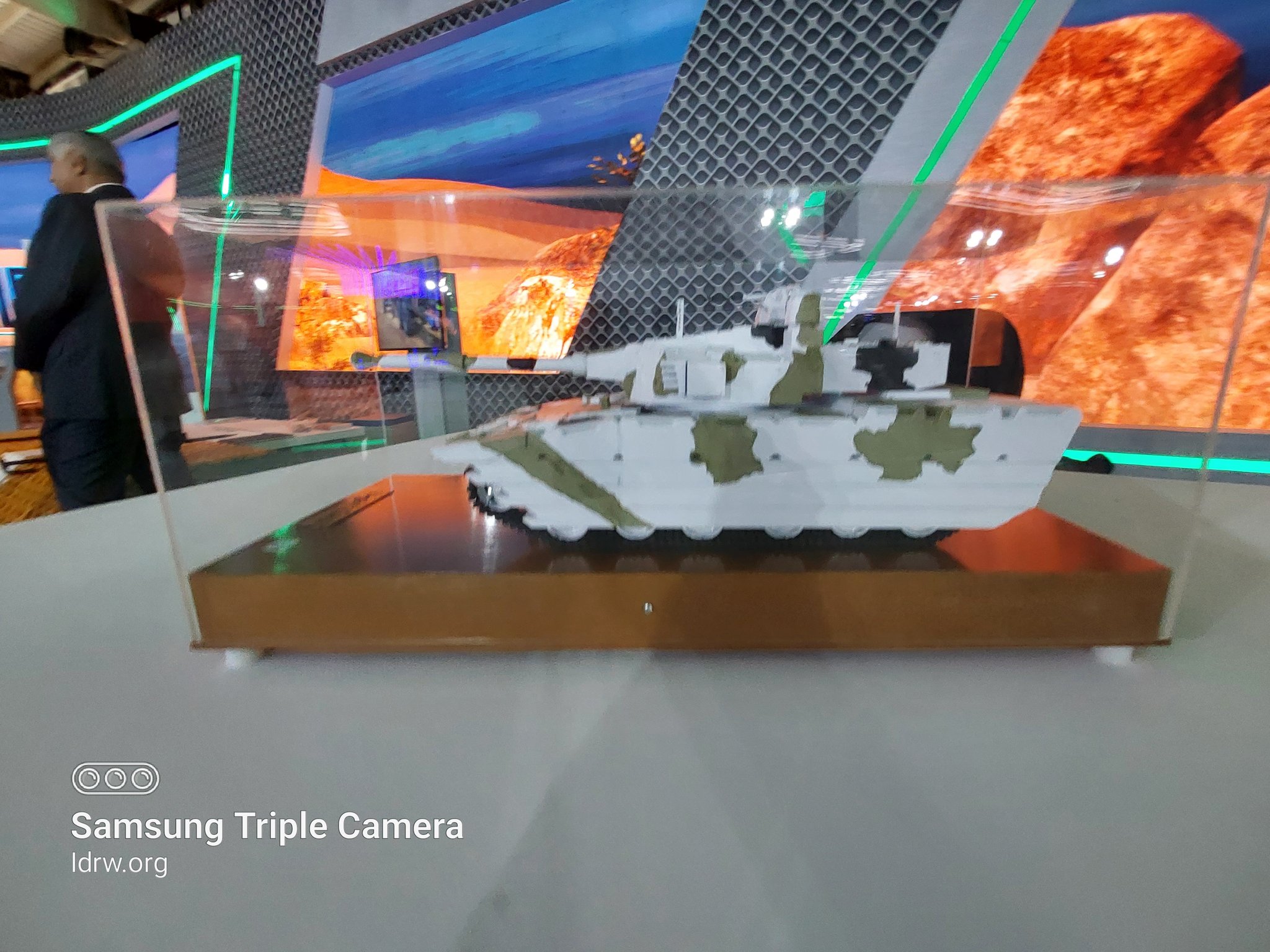
The collaboration between the Defense Research and Development Organization (DRDO) and Larsen & Toubro (L&T) in developing India’s Light Tank under Project Zorawar is making significant progress, with the anticipated rollout of the prototype expected by the end of this month or the early weeks of December.
Last year, at the Defence Expo 2022 in Gujarat, DRDO unveiled the first-scale model of the 25-ton Light Tank under development. The upcoming tank is designed to cater to diverse operational requirements, offering mobility and firepower in various scenarios.
Continue readingSOURCE: RAUNAK KUNDE / NEWS BEAT / IDRW.ORG
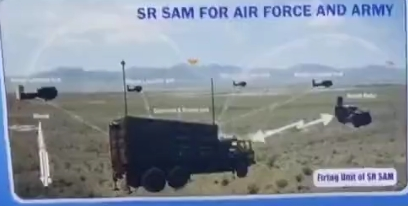
The Defense Research and Development Organization (DRDO) made a significant impact at the Dubai Airshow by unveiling a range of Indian-made weapon systems, including the upcoming Short Range Surface-to-Air Missile (SR-SAM) Mobile Air Defence System. This marks the first public appearance of the SR-SAM system, designed to provide inner-circle protection against aerial threats for both the Indian Army and the Indian Air Force.
The SR-SAM is a truck-based air defense system based on the Vertical Launch Short Range Surface-to-Air Missile (VL-SRSAM), initially developed for the Indian Navy to replace the Israeli Barak-I Point Defence Missile system on frontline warships. The system is part of DRDO’s efforts to enhance India’s indigenous air defense capabilities.
Continue readingSOURCE: RAUNAK KUNDE / NEWS BEAT / IDRW.ORG

In a significant leap forward for India’s indigenous Light Combat Aircraft (LCA) Tejas Mk1, the wind tunnel model of the aircraft was recently showcased, revealing the integration of the Twin missile carrying pylon equipped with Advanced Short Range Air-to-Air Missiles (ASRAAMs) Close Combat Missile (CCM). The unveiling, led by HAL Test Pilot Harsh Vardhan Thakur, marks a pivotal moment in the evolution of the Tejas platform, highlighting its enhanced firepower capabilities.
The spotlight of the showcase was on the newly designed Dual-Rack Pylons, a key upgrade for the Tejas Mk1. These pylons, attached to the outermost wings, are equipped with ASRAAMs Close Combat Missiles, showcasing the aircraft’s versatility in handling both air-to-air and air-to-surface missions. This development aligns with the commitment made at Defexpo 2018, confirming that the upgraded Tejas Mk1A variant would feature these advanced Dual-Rack Pylons.
Continue readingSOURCE: IDRW.ORG TEAM

The Defense Research and Development Organization (DRDO) showcased the upcoming Twin Engine Deck Based Fighter (TEDBF) fighter jets for the first time at the Dubai Airshow, providing insights into the potential weapons package of this deck-based fighter jet designed to replace the Russian Mig-29Ks currently in service with the Indian Navy.
The TEDBF Weapons infographic revealed at the Dubai Airshow highlighted a formidable arsenal, including the Mach 3.5 capable Air-Launched BrahMos-NG Supersonic Anti-ship Cruise missile. The Rampage Standoff Weapon system was also featured in the infographic, showcasing the versatility of the TEDBF in engaging a variety of targets.
Continue readingSOURCE: IDRW.ORG TEAM

Bharat Electronics Limited (BEL), a prominent defense technology company in India, is actively engaged in discussions with its Israeli partners to mitigate potential impacts caused by the ongoing conflict in Israel. While BEL acknowledges that some disruptions are expected in the short term, it remains optimistic about the commitment from its Israeli counterparts to minimize these effects. The company’s focus remains on fulfilling its defense contracts and further advancing localization efforts.
Bhanu Prakash Srivastava, Chairman and Managing Director of BEL, recently shared insights into the company’s ongoing collaboration with its Israeli partners and the challenges posed by the current conflict in Israel. While acknowledging the short-term nature of the war’s impact, Srivastava emphasized that the Israeli partners have provided assurances that they are dedicated to minimizing any disruptions.
Continue readingSOURCE: RAUNAK KUNDE / NEWS BEAT / IDRW.ORG

German shipbuilder ThyssenKrupp Marine Systems (TKMS) has responded to the Request for Proposal (RFP) issued by the Indian Navy with an enticing offer – an enlarged variant of its renowned Type-214 Submarine. The proposed submarine, tailored to meet the specific requirements of the Indian Navy, is set to surpass the Kalvari-class submarines acquired under the P-75 program.
The Type-214, known as the export model of the Type-212, typically boasts a submerged displacement of around 1860 tons. However, TKMS’s proposal for India introduces a substantial upgrade, featuring a submerged displacement exceeding 2000 tons. This enhancement positions the proposed submarine as larger than the Standard Kalvari-class submarines, what’s on offer might be similar to AIP-equipped Kalvari-class submarines that are under consideration.
Continue readingSOURCE: RAUNAK KUNDE / NEWS BEAT / IDRW.ORG

India’s Ministry of Defence (MoD) has embarked on an ambitious journey to develop and execute high-priority military projects under the Special Purpose Vehicle (SPV) model. This approach involves a government agency leading the project and partnering with private sector companies to develop critical technologies and components. While the SPV model holds great promise, it faces challenges and uncertainties, particularly in enticing major private sector players to participate fully in projects like the Indian Multi-Role Helicopter (IMRH), 5th generation Advanced Medium Combat Aircraft (AMCA), and Deck-based Twin Engine Deck Based Fighter (TEDBF) fighter jet programs for the Indian Navy.
The IMRH program, which seeks to develop a modern helicopter for the Indian armed forces, highlights the lukewarm response from private sector companies. Despite India’s growing foray into the defence sector over the past few decades, many private sector companies have limited themselves to tier-II supplier partnerships in defence programs. This cautious approach stems from concerns over the availability of a skilled talent pool and the profitability of their contributions. Private sector players are wary of entering projects that may not yield viable profit margins.
Continue readingSOURCE: RAUNAK KUNDE / NEWS BEAT / IDRW.ORG
The Ministry of Defence, Government of India, has announced its intent to procure 6,175 Multi-Spectral Camouflage Nets (MSCN) for High Altitude Areas, including Barren Mountains and Snow Bound Areas. This procurement initiative seeks participation from prospective bidders to provide this specialized equipment, designed to enhance the concealment and protection of critical military assets in challenging terrains.
The MSCN for High Altitude Areas (HAA), specifically Barren Mountains and Snow Bound Areas, is crafted from specially developed polymer-coated fabric with a disruptive pattern. The primary objective is to create a camouflage net that seamlessly blends with diverse environmental terrains while suppressing signatures in various ranges of the electromagnetic spectrum, including Visual, Infrared (IR), Thermal Infrared (TIR), and radar.
Continue readingSOURCE: IDRW TEAM
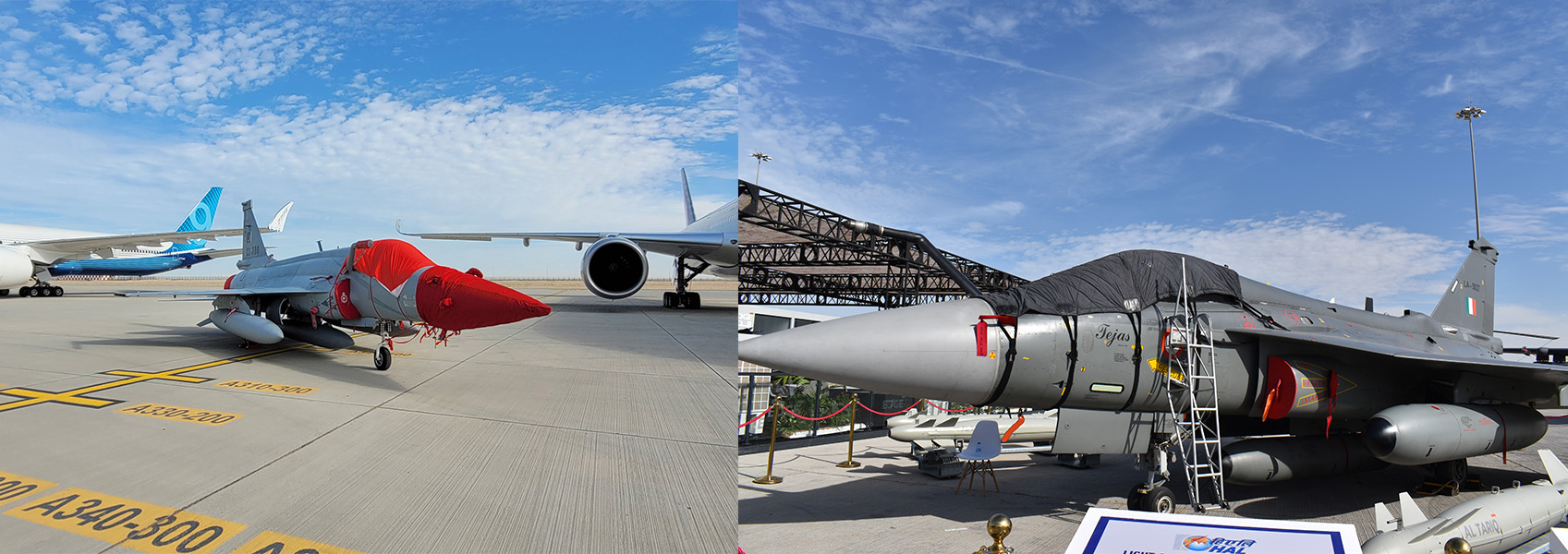
In a landmark event, the Dubai Air Show is set to witness a unique spectacle as light fighters from regional rivals India and Pakistan, the HAL Tejas and CAC/PAC JF-17, respectively, take center stage in the same exhibition and air display.
The Indian Air Force has made a significant presence with three HAL Tejas LCA (Light Combat Aircraft) fighters, accompanied by the Sarang Helicopter Display Team, showcasing the ALH (Advanced Light Helicopter). The Tejas, developed by Hindustan Aeronautics Limited (HAL), is a symbol of India’s technological advancements in indigenous fighter aircraft.
Continue reading